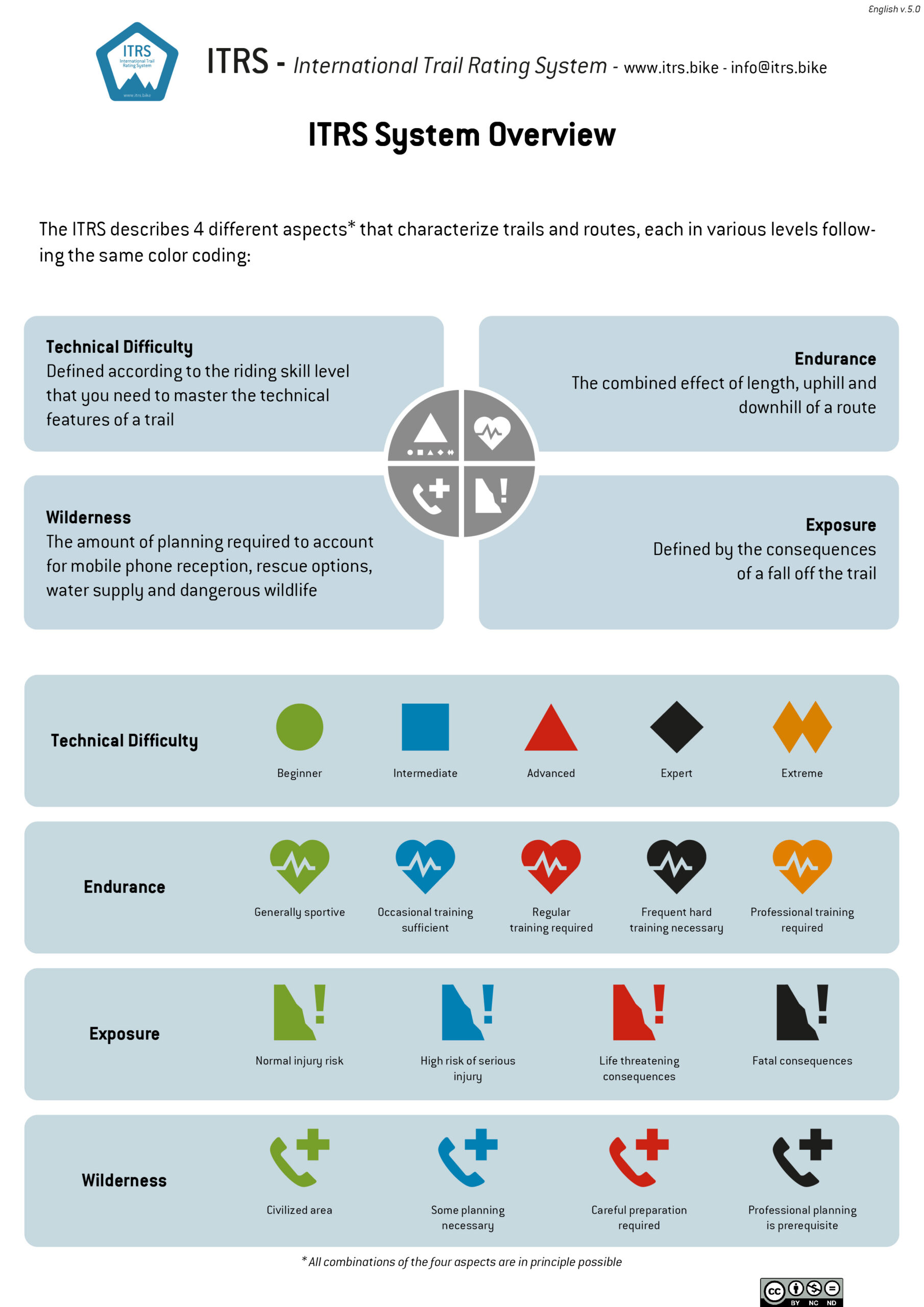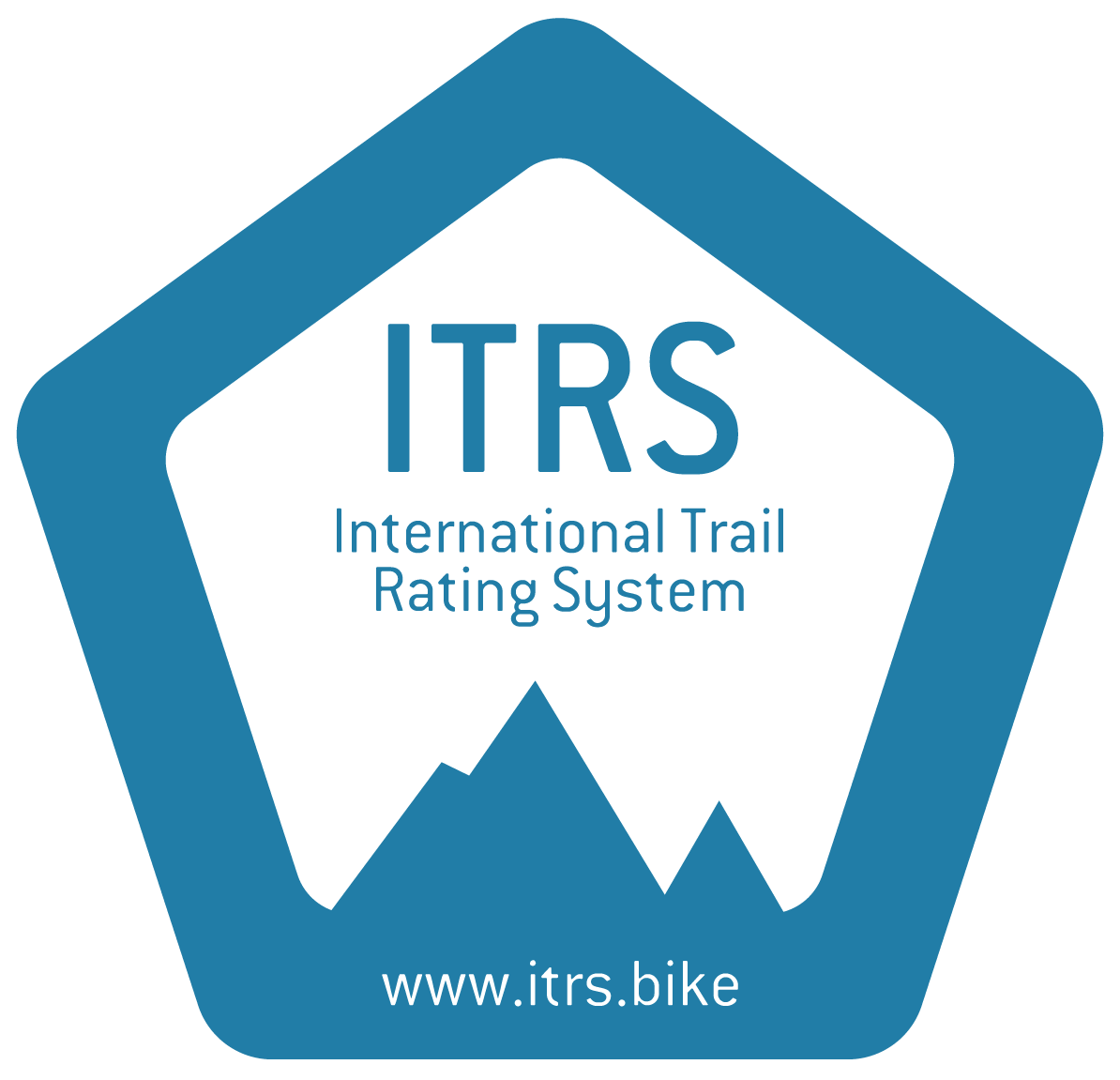The ITRS is an objective way to assess trails and routes from a biker’s perspective. The ITRS informs the bikers about the requirements to safely master the various challenges of a trail or an entire route.
For this purpose, four aspects are evaluated in the ITRS, which in their interaction reflect the fascination and complexity of mountain biking:
Technical Difficulty, Endurance, Exposure and Wilderness.

Goals and guiding principles of the ITRS:
More safety for bikers
By linking the technical difficulty of trails and routes with the necessary riding skills. This enables the content of riding skills courses to be specifically adapted to the technical difficulty levels. Misjudgements of the necessary riding skills and thus the risk of accidents are reduced.
Thanks to an international dissemination of a uniform and target group-oriented trail rating system. This alone will reduce the risk of accidents as well.
Increased attractiveness and quality of touristic offers for bikers through:
- a new logic and innovative graphic implementation of the rating of entire routes or tours, which illustrates their complex reality in an intuitively understandable way. It makes it easier for bikers to find the right offers for them and to have positive experiences on their bikes.
- the introduction of a certification system for the classification of trails according to ITRS in order to achieve a correct and consistent application of the ratings. Destinations will be able to demonstrate that their trails are rated according to the standards and that the trails are professionally maintained.
- Greater consistency of newly built trails, as the ITRS also serves as an additional guideline for trail builders to consistently build mountain bike trails according to specific difficulty levels.
Maintaining the adventure vibe
Mountain biking thrives on the variability and unpredictability of trails and routes. The ITRS strives for a balance that leaves mountain biking with this fascination, but at the same time can contribute to more safety and a positive experience.

Background about the project that led to the ITRS:
Industry professionals from all over the world have taken part in the development of the ITRS by providing valuable feedback over years of development and refinement.
Entities involved since the early stages include the Swiss Bike Park and IMBA Europe (International Mountain Bicycling Association).
The International Trail Rating System (ITRS) was created to classify the challenges of mountain bike trails and routes. The ITRS puts the bikers in the center achieving a consistent advancement compared to the approaches of already existing systems.
In 2020, there were at least 14 different trail rating systems in Europe alone to describe the “difficulty” of mountain bike trails and routes, whereby “difficulty” did not always evaluate the same aspects. Therefore, the Swiss Bike Park – the Swiss society project for the needs of top, popular and disabled sports in the field of mountain biking – together with Davos Klosters and other destination partners, initiated a project that aimed to standardize trail rating systems. This project has now resulted in the ITRS – International Trail Rating System.
Thanks to financial support from Innotour, the funding instrument of the Swiss state Secretariat for Economic Affairs SECO, with the support of IMBA Europe and the strategy consultancy Input Consulting in Bern, the contents of the ITRS have been developed and structured over several years. Central inputs were obtained through a survey among over 1,300 bikers from Europe and coordinated with numerous experts from riding skills training and trail building.
The ITRS is not a completely new system but instead a consistent and clearly structured combination and advancement of the most relevant previous systems. The ITRS is an objective way to assess trails and routes from a biker’s perspective. The ITRS informs the bikers about what they need to bring with them in order to safely master the various challenges of a trail or an entire route.
For countries with existing official trail rating systems the ITRS will not immediately replace the existing systems but each system will be revised occasionally and testing the ITRS in selected destinations can lead to new insights. On the other hand, for such countries that currently don’t have any trail rating system in place the ITRS can serve as a blueprint and can be implemented directly.
